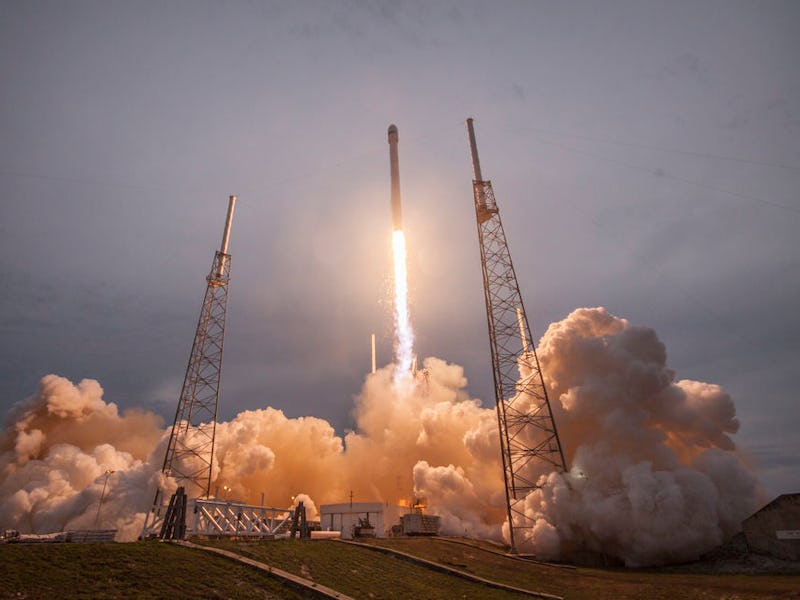SpaceX has completed static test fires for its next major mission, and it’s set to push the company in an exciting direction. The company announced on Wednesday that now tests are complete, it’s targeting an early morning launch of the highly-reusable Falcon 9 Block 5 booster, followed by another launch a few days later — which means sending out two drone ships at once for the second time ever.
The company plans to launch a Telstar 19 Vantage communications satellite at 1:50 a.m. Eastern time on July 22, from the Cape Canaveral Air Force Station in Florida, using the Block 5 ship. Just three days later, at 7:39 a.m. Eastern time, the company plans to launch Iridium NEXT’s seventh mission from the Vandenberg Air Force Base in California. Teslarati notes that this is only the second time both ships have been deployed at once.
The use of Just Read the Instructions and Of Course I Still Love You at the same time shows the constraints placed on SpaceX as it ramps up launches. Because it takes between seven and 10 days for drone ships to move out to the landing point and back again, it’s likely that this will serve as one of the company’s biggest constraints on missions until it brings a third drone ship online — particularly as the company is expected to try and recover boosters far more often.
“Block 5” received its first launch in May with the Bangabandhu-1 communications satellite for the Bangladesh Telecommunications Regulatory Commission. The upgraded rocket makes a number of key changes, like enabling reuse of rockets faster than before. Improvements like new heat shields will increase durability, working toward the goal of using each Falcon 9 10 times with inspections between launches, and 100 times with refurbishments. The rocket also uses reinforced legs to make returns easier. Hans Koenigsmann, vice president of build and flight reliability at SpaceX, told reporters in May that Block 5 “basically summarizes all that we learned on reusability.”
These improvements will help SpaceX reach its goals with BFR production, the rocket aimed at taking over Falcon rocket duties while also offering the power to reach Mars. Evidence suggests the rocket could undergo short hop tests next year.
Before that deadline, there’s plenty of improvements to make to the Falcon 9. An upgraded Mr Steven fairing-catching ship is set to make its debut at the July 25 launch, offering a net four times larger than its predecessor at 0.9 acres.
